For Rod Serling, TV was the perfect landscape to battle bigotry and corporate censorship. But was the nation ready for it?

In the late 1950s, Rod Serling found himself sitting in a London airport tired and ready to go home. As he waited to board his flight, he spotted something eerie. Across the room stood his doppelgänger: a man who looked to be his same height, sporting the same coat and carrying the exact same cowhide briefcase. It blew his mind. As the award-winning TV writer tried to catch a glimpse of his double’s face, a strange thought hit him: What if, through some glitch in the universe, he was watching another version of himself?
“I kept staring and staring,” Serling recalled, “with this funny, ice-cold feeling that, if he turns around and it’s me, what do I do?” Eventually, the gentleman did turn around. He was a decade younger and, Serling joked, far better looking. But the experience was too uncanny to forget.
As a writer, Serling made his name toying with unsettling concepts, which made him a critical darling. His 1956 teleplay, Requiem for a Heavyweight, had garnered numerous awards, an Emmy among them. But corporate sponsors didn’t find his work appealing. Always looking to skirt controversy, they preferred to work within the confines of formulaic Westerns and bland sitcoms. Serling wanted none of that. He thought TV should probe deeper, believing it could address big concerns: social injustice, bigotry, mortality. In 1959, he got the chance to do just that, using that strange airport experience as the kindling for his legendary science fiction TV series, The Twilight Zone. The series would be a double itself, a serious exploration of politics and ethics disguised as harmless sci-fi. The question was whether he could get away with it.
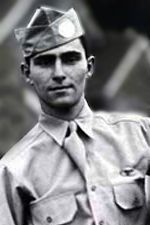 Even as a teenager, Serling had been a social activist. Growing up in Binghamton, New York, he was editor of the high school newspaper, injecting social commentary in between box scores. Fighting in World War II only galvanized his mission. Stationed in the Philippines with a demolition platoon, he witnessed horror firsthand. Serling left the island consumed by a hatred for war, and he brought back a souvenir: a piece of shrapnel in his knee that bled spontaneously for the rest of his life.
Even as a teenager, Serling had been a social activist. Growing up in Binghamton, New York, he was editor of the high school newspaper, injecting social commentary in between box scores. Fighting in World War II only galvanized his mission. Stationed in the Philippines with a demolition platoon, he witnessed horror firsthand. Serling left the island consumed by a hatred for war, and he brought back a souvenir: a piece of shrapnel in his knee that bled spontaneously for the rest of his life.
At home, Serling struggled for direction. “I didn’t really know what the hell I wanted to do with my life,” his daughter Anne quotes him as saying in her book, As I Knew Him. He eventually registered as a phys-ed major at Antioch College and tried to fit in. But he kept noticing discrimination. When he noticed that a local barbershop refused to cut the hair of African-Americans, he insisted that his friends stop patronizing it.
Meanwhile, Serling found what seemed to be his calling: manning the microphone of the campus radio station, where he wrote scripts, directed, and acted. By his senior year, he was doing weekly shows. One of his scripts would win a national radio contest.
 Writing became Serling’s way to deal with the psychological scars of war. Plagued with nightmares, he wrote and sold scripts to radio companies, which eventually led to television gigs. His early work was taut and uncompromising, doggedly pursuing questions about morality and inequality. He thought that TV, film, and radio should be “vehicles of social criticism.” The trouble was, exploring prejudice on TV was nearly impossible. Corporate sponsors ritually censored and watered down his teleplays. When one script about the lynching of a young black man was turned into a popcorn western, Serling became furious. In his words, all the networks wanted was to showcase “dancing rabbits with toilet paper.”
Writing became Serling’s way to deal with the psychological scars of war. Plagued with nightmares, he wrote and sold scripts to radio companies, which eventually led to television gigs. His early work was taut and uncompromising, doggedly pursuing questions about morality and inequality. He thought that TV, film, and radio should be “vehicles of social criticism.” The trouble was, exploring prejudice on TV was nearly impossible. Corporate sponsors ritually censored and watered down his teleplays. When one script about the lynching of a young black man was turned into a popcorn western, Serling became furious. In his words, all the networks wanted was to showcase “dancing rabbits with toilet paper.”
Despite the censorship, Serling had nabbed three Emmys by 1957. But he was also exhausted by the constant battles for creative control, so he returned to an idea he’d had back in his college radio days. Inspired by the works of Edgar Allan Poe and the pulp stories of his youth—writing that couched complex messages in pure fantasy—he wrote an hour-long teleplay called The Time Element, in which a distressed American has recurring dreams that he’s transported to 1941 to warn of the pending attack on Pearl Harbor. He consults a psychiatrist, who tries to diffuse his anxiety. Suddenly, the patient stops showing up and, in one of Serling’s trademark twists, the psychiatrist learns the distressed man died in the attack 15 years earlier.
CBS was lukewarm on the script, and The Time Element seemed destined to rot in the network’s archives. But in November 1958, a producer who wanted to air something by Serling plucked the episode from storage. When it ran, more than 6,000 glowing letters flooded in.
The execs took the hint. Soon after, the network asked Serling to write more stories like it for a new series. At last, Serling’s dream was coming true: The Twilight Zone was born. The title, aviation lingo for the point where a pilot can no longer see the horizon, had a double meaning. For Serling, it represented the point where executives could no longer see his true intentions. The spooky show would be a smokescreen for exploring themes like racism, government corruption, and persecution. Anne recalls her father musing that “an alien could say what a Democrat or Republican couldn’t.”
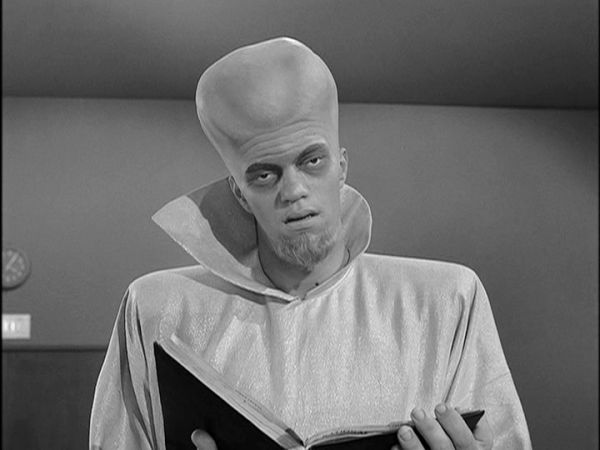
As he worked 12- to 14-hour days seven days a week, Serling’s ashtray overflowed. His smoking habit made his fingers too stiff and cold to type, so instead, he kicked his feet onto his desk and dictated into a recorder. He made different voices for different characters, reciting camera directions and marking punctuation. The scripts quickly piled up. In the afternoons, Serling visited the set in Culver City and wandered the MGM backlot for more inspiration. The studios housed every setting imaginable, from Martian landscapes to barren wastelands.
The 1959 pilot episode, “Where Is Everybody?” set the tone for the series. In it, an astronaut finds himself dropped in a deserted town, and the unfolding story slowly reveals that he’s part of an experiment testing whether astronauts can handle the isolation of long-term space travel without cracking. Hours after a private screening, General Foods and Kimberly-Clark agreed to back the series. Serling’s Trojan horse was off to the races.
The Twilight Zone premiered Friday, October 2, 1959, at 10 p.m. Almost immediately, angry letters poured in—not from offended viewers, but from parents who were irritated that their kids were staying up late to watch the show. “Every week you looked forward to a different kind of realization and shock,” says author Mark Olshaker, who was 10 when the series debuted (he would later consult with Serling on a biography). “You knew you were going to get something that was going to make you think. On Monday morning, that’s what you would talk about.”
It wasn’t just kids. Adults were captivated by the fantasies, the themes, and especially the ironic endings that made the series famous. As civil rights debates exploded, the episodes mirrored newspaper headlines. In “I Shot an Arrow Into the Air,” three astronauts crash-land on a strange alien landscape. Without laws or consequences, one of them regresses to animal instincts and murders the others. The survivor’s fate? Accountability. (They had landed in the Nevada desert.) In “The Monsters Are Due on Maple Street,” a neighborhood devolves under suspicion that someone might be an alien invader. In the end, none are—but real aliens observe the chaos from above, musing that mankind is all too quick to destroy itself. Attentive viewers realized the only thing black-and-white about The Twilight Zone was its cinematography. Fan clubs sprang up in most states, with members christening themselves “Zonies.”
Federal Communications Commission Chairman Newton Minow famously dubbed TV a “vast wasteland,” but he made an exception for Serling’s show. The title even entered the popular vernacular: When boxer Archie Moore was KO’d in a 1961 match, he told reporters, “Man, I was in the Twilight Zone!” By 1962, the show had made a huge dent in popular culture. Serling released a collection of short stories based on the series, and it sold more than a million copies. Before long, a Twilight Zone board game, comics, and a record appeared on the market.
Despite all the success, the show still hadn’t won over the network. CBS president James Aubrey continued to chop away at the show’s budget, convinced it was eating up too much money. Meanwhile, Serling refused to compromise and often dipped into his own pockets. By season three, Aubrey was pinching so many pennies that he insisted that six episodes be shot on videotape rather than film. The quality would be a jarring contrast to the film-noir feel the crew was careful to keep consistent. Serling was so angry he threatened to resign. (He was bluffing.)
It was clear that Serling was losing control. One sponsor called CBS repeatedly, demanding to know what Serling was really getting at: He sensed a deeper layer but couldn’t articulate exactly what it was. Serling, for his part, was making his points more obvious. (In an audacious move for the era, he cast three black actors in leading roles in “The Big Tall Wish.”)
As ratings idled and sponsor suspicions grew, the network effectively canceled the show in spring 1962. But then, in a bizarre twist, it was resurrected when CBS realized it had no solid replacement. It renewed the show and expanded its time slot from half an hour to an hour.
But messing with the formula was a mistake. At an hour long, the show lost its crucial tension. Ratings plummeted, and though a fifth season was ordered, it was clear the show was running on fumes. When CBS finally let the axe fall in early 1964, Serling held a tongue-in-cheek wake, complete with a tombstone, on the MGM soundstage. “He thought it had run its course,” Anne says. Dejected, Serling told journalists he thought The Twilight Zone would be forgotten in short order.
This wasn’t a good prediction. While the void left by Zone was indeed filled with vapid sitcoms— like 1964’s megahit Gomer Pyle, U.S.M.C.— something about Serling’s ability to weave cultural commentary into popular entertainment would captivate viewers for decades to come. The Twilight Zone’s O. Henry–esque twists became pop culture staples: gut-punch scenes, like the climax in “Time Enough at Last” (in which an introverted bank teller longing to be left alone with his books finds himself the lone survivor of an atomic blast that has mercifully spared most of the books in the nearby public library; unfortunately, he ends up shattering his glasses and can’t read without them) would become timeless TV tropes—even parodied on The Simpsons. The show had proved that audiences were just as willing to consume ideas as they were slapstick, which opened the doors for shows like M*A*S*H, which padded entertainment with rich, powerful messages.
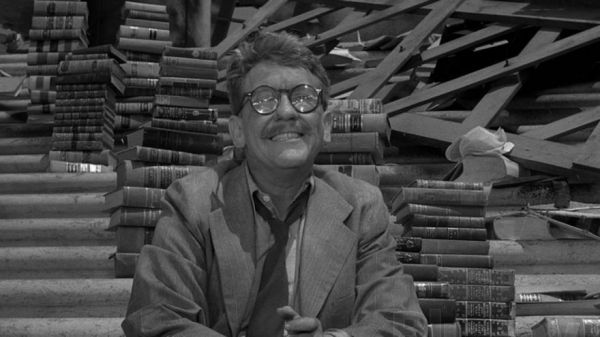
“Almost any writer, when you ask who influenced them, will say Rod Serling,” says TV critic Mark Dawidziak. That includes J.J. Abrams, who gushed over Serling’s allegory in Wired in 2007, and Stephen King, who, in a chapter in his memoir Danse Macabre writes: “Of all the dramatic programs which have ever run on American TV, it is the one which comes closest to defying any overall analysis. It was its own thing, and in large part that fact alone seems to account for the fact that a whole generation is able to associate the Serling program with the budding of the sixties ... at least, as the sixties are remembered.” Unfortunately, Serling, who passed away in 1975, wouldn’t live to watch his influence spread.
At one point, Serling recalled the incident with his would-be double at the London airport and said that it was typical of “the kind of story you’ll be seeing on The Twilight Zone.” Of course, that was not entirely true. There was no one kind of Twilight Zone story. The thread was simply that each episode held a mirror to society and compelled viewers to question both their own preconceptions and the wisdom of the powers that be. Serling was just reflecting on the era: the tumult of civil rights, the Vietnam War, and a surging counterculture.
With Zone, viewers found a show that not only grappled with messy topics, but also tried to provide answers. “To my generation that came of age in the ’60s, the show was amazingly important,” Olshaker says. “[We were] idealistic enough to believe anything is possible and cynical enough to believe nothing is true. Twilight Zone was one of the seminal forces in that realization. It opened up possibilities of imagination, of social consciousness, but also realities of evil and prejudice.”
As for the question of the doppelgänger, perhaps Serling realized he could be two people at once: one who could entertain and one who could provoke. Maybe his fifth dimension wasn’t fantasy. Maybe it was a way for television to face reality.
__________________________
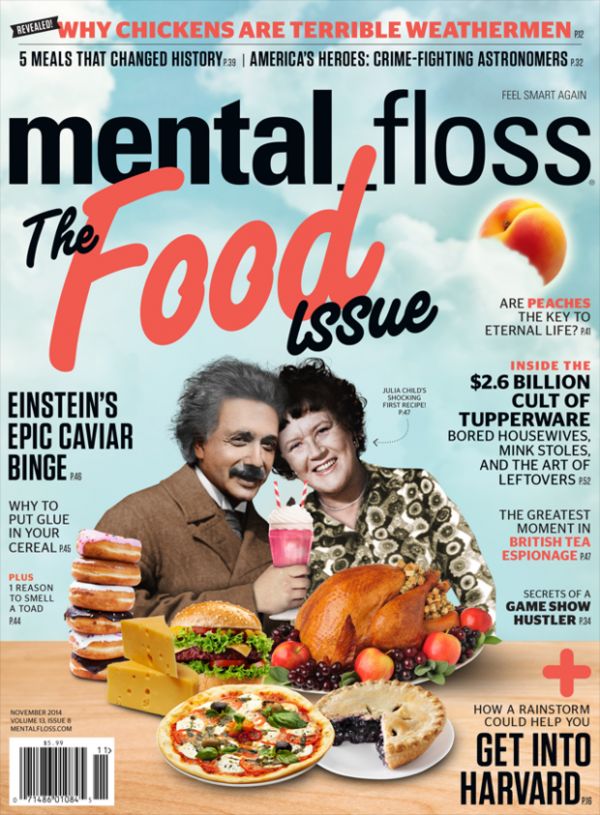 The above article by Jake Rossen is reprinted with permission from the November 2014 issue of mental_floss magazine.
The above article by Jake Rossen is reprinted with permission from the November 2014 issue of mental_floss magazine.
Don't forget to feed your brain by subscribing to the magazine and visiting mental_floss' extremely entertaining website and blog today for more!


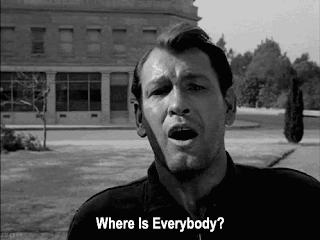






In fact it's a whole category (science fiction anthology TV series) and there were many more: http://en.wikipedia.org/wiki/Anthology_series#Science_fiction_and_horror
And any mention of Serling & Twilight Zone is horribly incomplete without at least a mention of the Night Gallery, which was a truly lousy sequel to Twilight Zone.
IMDB - A Carol for Another Christmas
Wikipedia - A Carol for Another Christmas
It was on TNT a few weeks back. I’d never heard of it, but I watched because I like fantasies and Christmas angels. As it started and I saw 1) all the top stars in it and 2) teleplay by Rod Serling, I thought I might be in for a treat. And I was - I’d caught a classic.
Yes it’s preachy and dated, but taken in context with the times and Serling’s attitude it all makes sense. The movie and its back-story would make an interesting blog post.
Of course I was, like, ten when it aired.
Sure, some of the episodes were corny but most of them made you look at our world (and ourselves) with different eyes. The episode "Let that be your last battlefield" sticks with me where Frank Gorshin and Lou Antonio are the last 2 men from a planet at war with each other. Each man is half white and half black but their colors are opposite to each other. They finally end up killing each other because of their prejudice. Such futility. All lost for nothing. I always thought that episode was one of the most profound shows I had ever seen up until that time in my life.